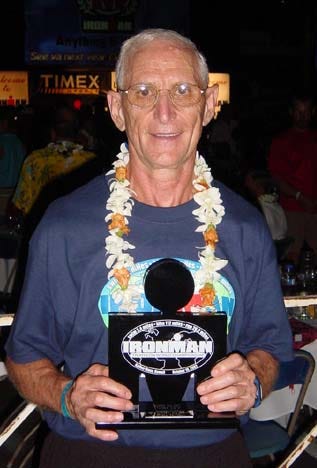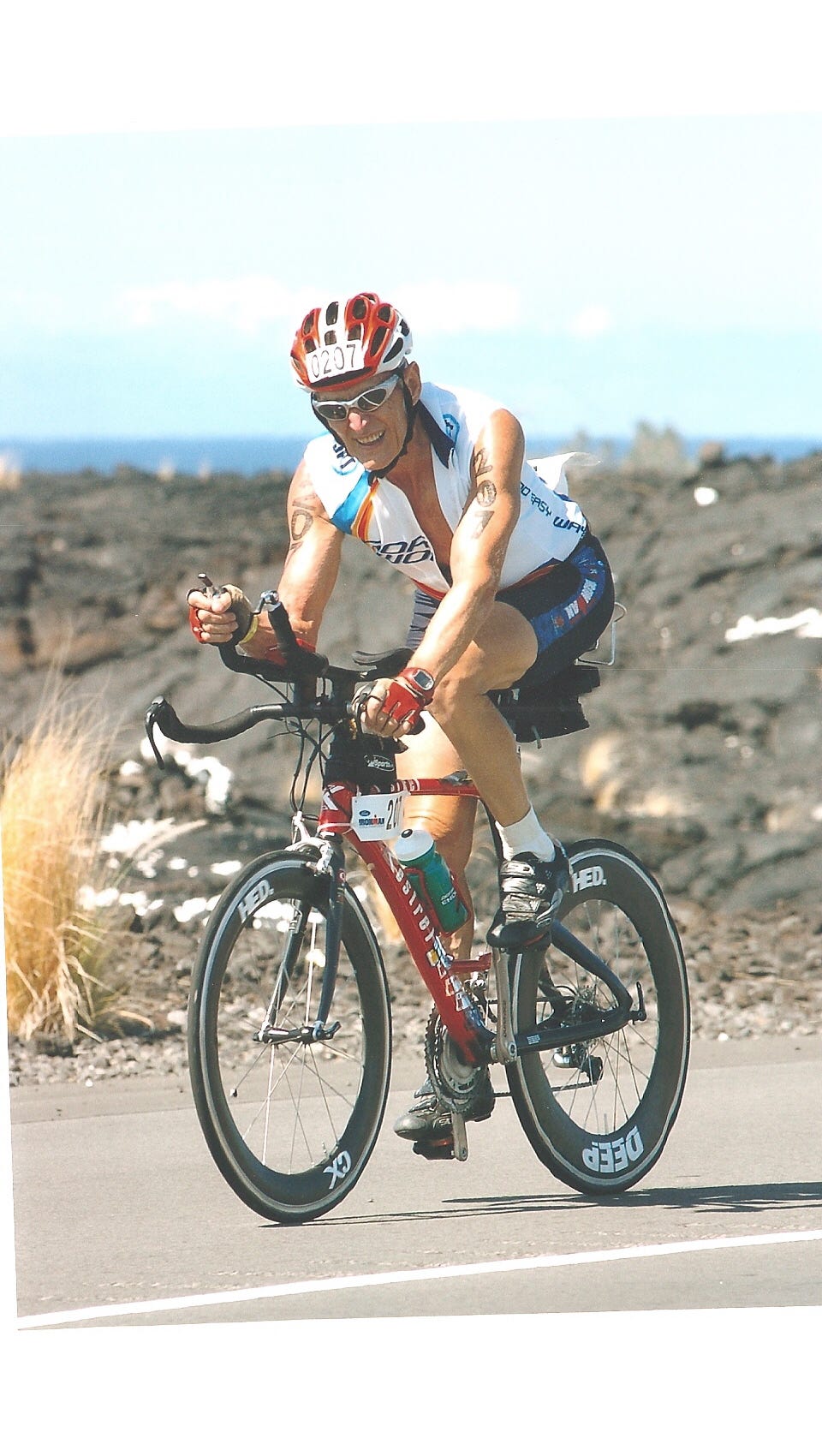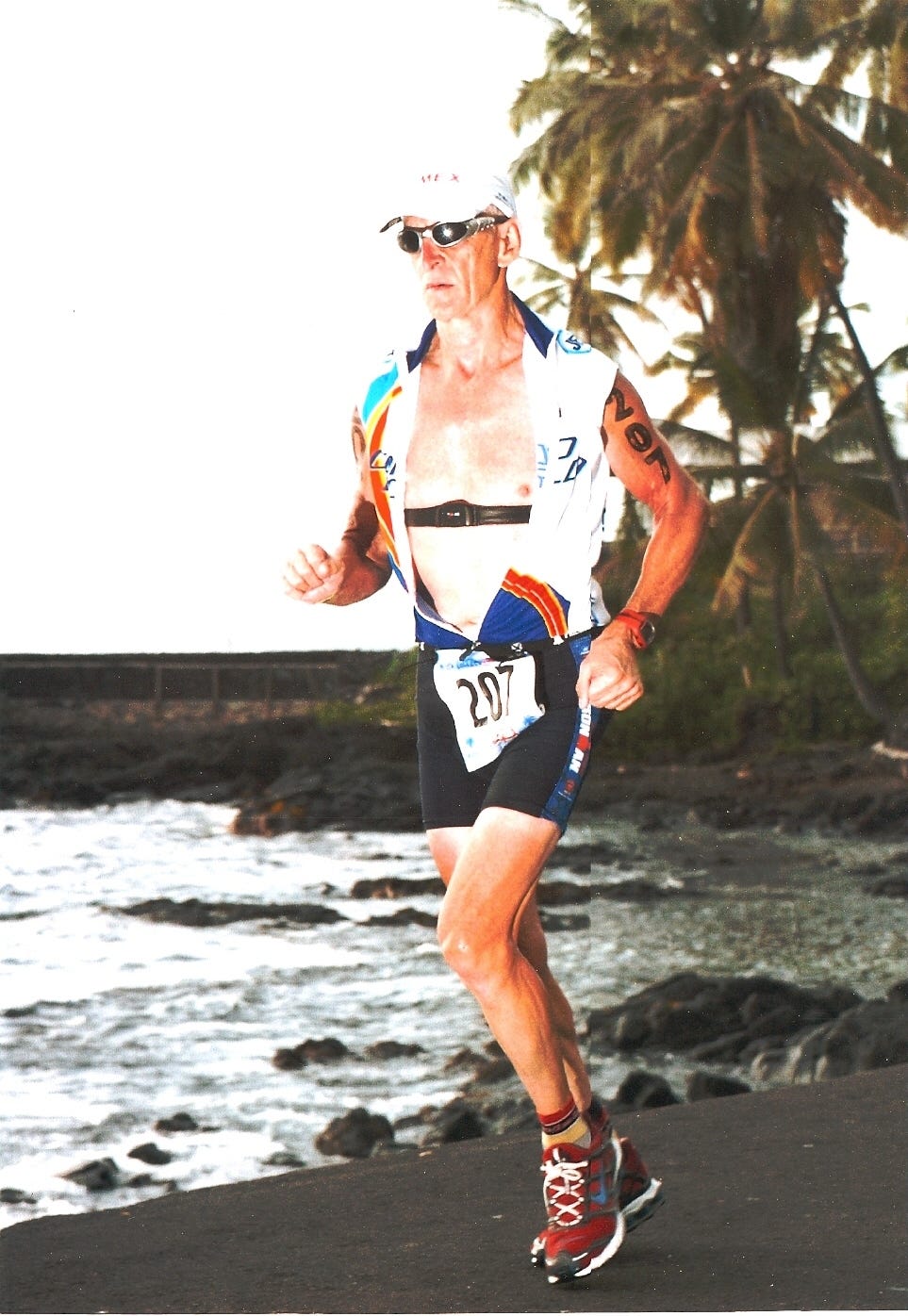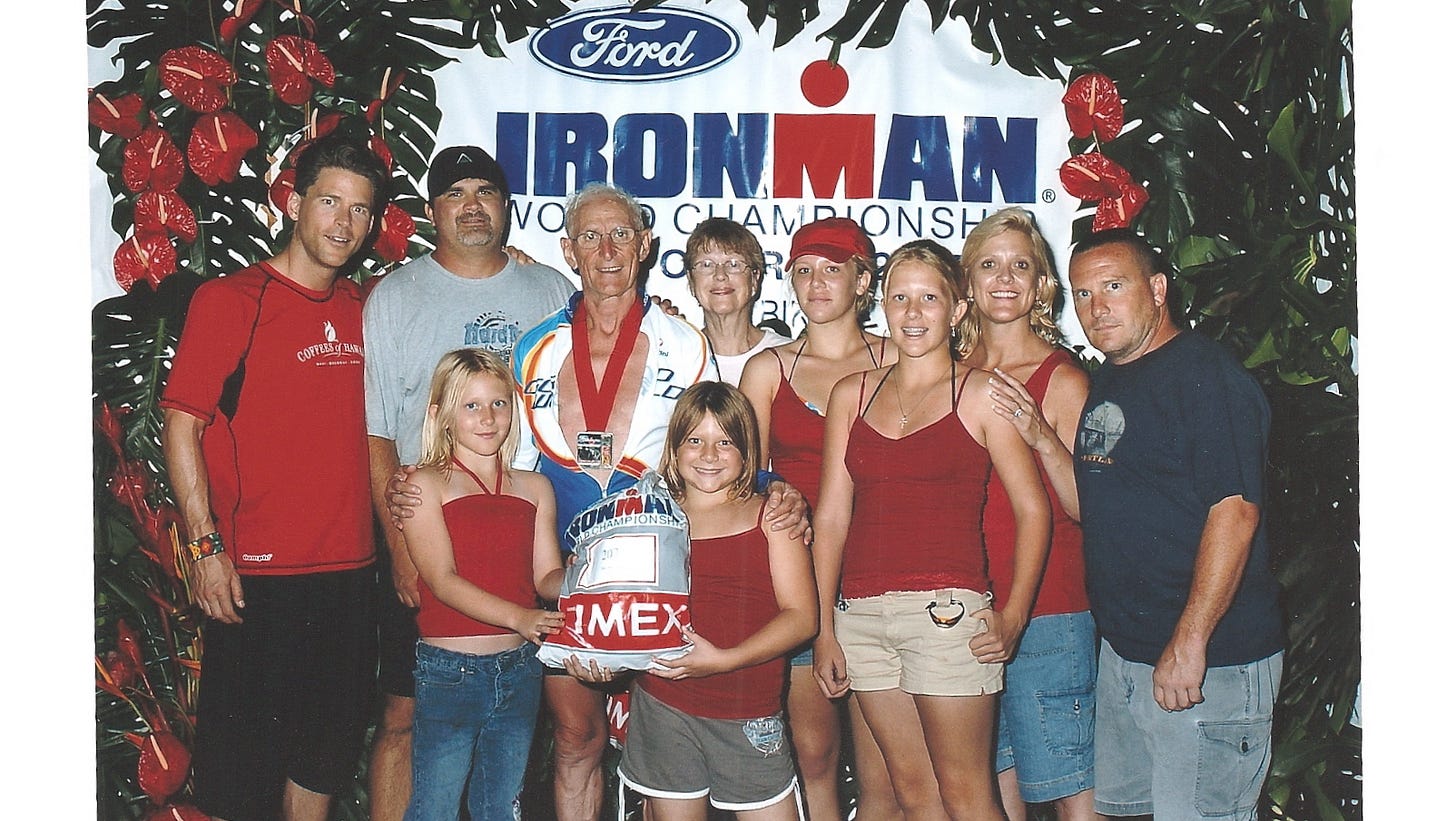Recently, I caught up with Ron. He’s nearing his 86th birthday and “getting back in shape.” He spent the last two years, caring for his wife, LaWanna, and had put training on the back burner.
If you have ambitious goals, then Ron’s story contains important lessons for you. Ron spent decades focused on being the best he could be.
Ron started racing triathlons in his 50s. He’d been having success in ultrarunning and decided to try Ironman racing. He qualified for Kona in his first Ironman (Canada). Through his 50s, and early 60s, he was “up on stage” a number of times in Hawaii. However, he never won his age group.
I was brought on to Ron’s team with one goal in mind.
Win in Kona.
One Goal
The assignment was simple - help a great athlete, become the best in their age group.
We set to work preparing to break the course record for the men’s 65-69 age group. At the time, sub-12 hours was the requirement.
There were four areas I wanted to help Ron improve:
Swimming - Ron was usually chasing out of the water.
Mobility - he had very limited shoulder mobility.
Cadence - in the upper age groups, the race is so long, duration becomes the challenge.
TT Strength - similarly, force production in the time-trial position becomes a limiter for Senior Vets, even the fastest athletes.
Swimming & Mobility - we discovered Ron didn’t have the ability to control his scapula.
I often see this issue (locked up shoulders) with younger swimmers who experience swimmer’s shoulder due to joint impingement.
The correction is to train the athlete to move the scapula independently from the rest of the body.
My favorite exercise for this task is a two-stage lat pulldown.
Stage One: is a shrug, only move the scapula (up, then down), keep the arms locked out.
Stage Two: is a traditional lat pulldown, performed while holding the scapula down, and in.
We knew Ron’s swim was going to be a long one, and we wanted to minimize the energy cost. Ron used consistent weekly swim volume & challenging long swim workouts.
Cadence & TT Strength - Ron is not a big unit and is training for a long race.
This means a few things for his racing:
The absolute VO2 required to move at goal pace is not high.
A small increase in power & pace has a material impact on race time.
Coming from an ultrarunning background, we knew Ron could run well when _very_ tired. The strategy was to reduce the amount of fatigue he carried into the marathon.
Year-Round Strength Training
Big Gear Cycling
High Intensity Uphill Cycling
High Cadence Cycling, particularly when fatigued
Ron never backed off on the strength training. This served him well. He was able to finish Ironman Texas as an 80-year old.
The lesson, of maintaining strength, isn’t merely for Senior Vets. If you have plans for lifelong enjoyment of your body, then stay in touch with your strength.
To reduce injury risk and increase muscular recruitment, Ron’s highest intensity work was done on the bike.
To challenge the ability to “keep moving,” high cadence cycling was done at the end of long rides. Additionally, the focus for long runs was high cadence, rather than goal paces and efforts. This is very challenging mentally.
These focus areas, over multiple seasons, worked.
Two changes I would make to the above:
Better Fatigue Management
Red Zone Cycling
Ron “out trained” everyone in his age group and his results showed it.
Did Ron get results from all his work? Yes, outstanding results.
Did Ron get his best results? This is where I’m not sure.
One of the reasons I repeat the “submax benchmarking” message is my experience with athletes like Ron.
If you are doing exceptional work then you want to ensure you are getting exceptional results.
Ron carried a lot of fatigue through his 60s. In hindsight, too much fatigue.
If Ron had carried less chronic fatigue then he would have had the mojo to use last week’s Sustained Speed protocol with his cycling. I think Red Zone Cycling would have helped him hold on to more of his bike power as he aged.
Ron did bike sprints (uphill) but didn’t do Sustained Speed on the bike. If your body doesn’t tolerate fast running, then this is an option for you to consider.
Pay close attention to the Sustained Speed article’s tips on dosing, a little goes a long way. Make sure you’re getting a positive adaptation from whatever protocol you choose.
Persist, As Long As It Takes
The plan to win the 65-69 category worked great.
Ron arrived in Kona fit, fresh and focused.
His race day execution was outstanding, and he went 11:57.
He finished in Second Place.
His SuperVet nemesis, Marcos Alegre, was just up the road with an 11:53.
A reminder that, in sport and life, relative outcome is not in our control. The difference was ~20 seconds per HOUR of racing.1
Ron made a decision to stick with it. Five more years of working towards his goal.
He raced Hawaii most of those years, taking his 69th year off to prepare for an attempt at the 70-74 record.
Amateur Racing, Elite Commitment
When Ron broke the 65-69 record in Kona:
He’d been racing at a high level for more than a decade.
He had a flexible work & family schedule.
He had a rock-solid marriage & social support network.
Ron’s life was stable in many ways:
Community
Marriage
Family
Work
Finances
Emotions
His life stabily meant there was little friction between Ron and the work required to achieve his goals. His life was predictable, and he lived in low-stress environment.
This was a conscious decision on Ron’s part, made after his kids grew up and were established in their own lives.
Role Of Ultrarunning
Ron and I came to triathlon via ultrarunning. We both wish we’d started swimming earlier.
Ultrarunning has certain advantages to endurance athletes:
Well Developed Easy Pace
Proven Run Durability
Strong Coping Skills When Exhausted
As an ultrarunner, Ron had a simple Basic Week:
Daily 10-milers during the Week
30-miler on the Weekend
He also managed a 22-year daily run streak, which ended when he broke his femur in a bike accident.
Before we started working together, Ron told me his run streak was non-negotiable. Respecting the power of the streak, we kept it in the program our entire time together.
Setbacks Are Inevitable
Racing in his mid-50s, Ron was a top amateur. Winning his classification in many events, including the 50+ Division of the Western States Endurance Race (100-miler, 20:55 at 53 years old, 1991 event).
Ron dealt with injuries, crashes and cancer. Each time he kept coming back. His persistence, in working towards his goals, is what sets him apart.
If you have ambitious goals, then Ron’s example is one to remember.
He kept coming back to Kona until he won his age group as a 70-year-old. That day, he didn’t leave it to chance. He broke the course record with a 13:05 time. 2nd place was more than an hour behind.
One of my happiest memories.
Training Through Chemo
In his late-70s, Ron was preparing for Ironman Texas. His training wasn’t going well. He was often tired and dealing with persistent stomach pains. It turned out his stomach discomfort was cancer. His doctor discovered a tumor below his diaphragm and traces of cancer in his spleen and kidneys.
In Ron’s words, he “shelved the race and went full blast on chemo.” Ron’s cancer responded well to treatment, and he was back training after a year. Ron credits endurance training with giving him the stamina to handle the chemo.2
Ron’s first “event” back was a ride across the United States. Nervous about accepting a 79-year-old participant straight out of chemo, the tour organizer made Ron get a release from his doctor. The doctor signed off, and Ron “got back in shape” riding across the US.
A year after the trip across the US, Ron won the 80-84 division at Ironman Texas.
Deep Motivation
Ron told me to tell you the #1 drive in his life was to make LaWanna, his wife of 65 years, proud of him.
When Ron won, he had LaWanna, their kids and grandkids scattered around the course.
He also had me popping up to yell, “Cadence! Drink! Eat!” and reminding him to walk the aid stations.
Ron built Deep Motivation.
You can do the same.
Learn The Course
Build A Connection To The Event
Create A Support Network
Get Out There
Put On A Show For Your People
Ron missed more times than he won. He persisted through setbacks and across time.
When he connected, after 15 years of trying, he went faster than any man his age had raced that course.
Final Thoughts
Ron’s story illustrates three truths about amateur racing.
The competition does not get easier as we age.
Once “good” it takes YEARS to become “great.”
When preparing to win, the course record is the standard.
When choosing ambitious goals:
Remember you are starting a long journey.
Understand that setbacks are part of the process.
Maintain social connections.
Choose races where you have a powerful connection.
Take time to master every component of your event.
Ron’s journey to the top took more than a decade.
Back To Table of Contents
At the sharp end, seconds count. On my best day ever, the difference between 1st and 2nd was 12 seconds per hour.
As an endurance athlete, you are the fittest looking person arriving in your doctor’s office. When you feel something is wrong in your body, you will often have to breakthrough the optics of looking “healthy.”












This was really inspiring to read. Fantastic determination from Ron and great achievements. He is a role model!
Great case study. It’s a good reminder that endurance is not measured in hours and minutes but in years and decades.